-
Wednesday, 4 October 2023 Sabatini Building, Floor 1
First guided tour around the exhibition
—Conducted by the show's curator, Laura Katzman
-
Thursday, 23 November 2023 Sabatini Building, Floor 1
Second guided tour around the exhibition
—Conducted by the show's curator, Laura Katzman
-
Wednesday, 10 January 2024 Sabatini Building, Floor 1
Third guided tour around the exhibition
—Conducted by the show's curator, Laura Katzman
-
Monday, 19 February 2024 Sabatini Building, Floor 1
Fourth guided tour around the exhibition
—Conducted by the show's curator, Laura Katzman
![Ben Shahn, The Passion of Sacco and Vanzetti [La pasión de Sacco y Vanzetti], 1958. Colección Michael Berg © Estate of Ben Shahn / VEGAP, Madrid, 2023](https://recursos.museoreinasofia.es/styles/large_landscape/public/Actividades/encuentro_ben_shahn.jpg.webp)
Held on 04 oct, 23 nov 2023; 10 ene, 19 feb 2024
The exhibition Ben Shahn. On Nonconformity surveys the work of artist Ben Shahn (Kaunas, Lithuania, 1898 – New York, 1969), a pivotal figure in American social realism. Laura Katzman, the show’s curator, explores the main themes in his work, accompanied by a dramatized reading by Alberto Chessa of a selection of Shahn’s essays and lectures, in which he discussed his conception of the creative process and the purposes of art, and texts that influenced his life and work.
Born into a working class, immigrant family from Eastern Europe, Shahn was one of the most prolific and committed American artists in the period stretching from the 1930s to the 1960s. His work explored important issues within the USA’s social context and global history, from the New Deal to the Vietnam War. Advocating the conviction of “nonconformity”, Shahn also challenged the predominance of Abstract Expressionism and other variants of avant-garde art in the 1950s. This retrospective, the first organised in Spain, spotlights the artist’s commitment to social justice, from contemporary diversity and equity perspectives —Shahn was an advocate for workers’ and migrants’ rights and openly criticised the abuses committed by the upper and ruling classes.
This curatorial encounter punctuates the key aspects of the exhibition, for instance the economic and environmental crises of the Great Depression, the rise of fascism, the atrocities of the Second World War, the anti-communist crusades of the Cold War, the threat of annihilation in the atomic era, struggles for labour and civil rights and the defence of human rights, as well as Shahn’s interest in spiritual themes and bible stories in his later years.
Organised by
Museo Reina Sofía
Collaboration
Programme
Encounters
Inside the framework of
TIZ 11. Utopia Memorial
Participants
Alberto Chessa is a writer, translator and voice actor. He is the author of six poetry books that have been awarded with different distinctions — the latest, entitled Palabras para luego, will be published soon by Huerga & Fierro. He has also overseen an essay volume on the film-maker Theo Angelopoulos (Círculo de Bellas Artes, 2015) and a book of aphorisms. As a translator, his most recent publication is a version of Elizabeth Barrett Browning’s Twelve Sonnets from the Portuguese (Balduque, 2022), while his voice has featured on numerous advertising creations, documentaries and information devices such as the audio-guide for the Alhambra in Granada and the online courses of the Telefónica Foundation for the Museo del Prado and Museo Reina Sofía in Madrid.
Laura Katzman holds a PhD in Art History from Yale University. She is a professor of Art History at James Madison University (Virginia, USA) and specialises in American art from the New Deal era and documentary photography from the USA and Puerto Rico. Katzman is the co-author, with Deborah Martin Kao and Jenna Webster, of Ben Shahn’s New York: The Photography of Modern Times (Yale University Press, 2000) and main author of Re-viewing Documentary: The Photographic Life of Louise Rosskam (Penn State University Press, 2014), and the editor of The Museum of the Old Colony: An Art Installation by Pablo Delano (UVA Press, 2023). She has also been a visiting curator at the Harvard University Art Museums and the American University Museum, and has been the recipient of grants from the Fulbright Foundation, the Smithsonian Institution and the Center for Advanced Study in the Visual Arts at the National Gallery of Art, Washington.
Más actividades

Oliver Laxe. HU/هُوَ. Dance as if no one were watching you
Tuesday, 16 December 2025 – 7pm
As a preamble to the opening of the exhibition HU/هُوَ. Dance as if no one were watching you, film-maker Oliver Laxe (Paris, 1982) engages in conversation with the show’s curators, Julia Morandeira and Chema González, touching on the working processes and visual references that articulate this site-specific project for the Museo Reina Sofía. The installation unveils a new programme in Space 1, devoted from this point on to projects by artists and film-makers who conduct investigations into the moving image, sound and other mediums in their exhibition forms.
Oliver Laxe’s film-making is situated in a resilient, cross-border territory, where the material and the political live side by side. In HU/هُوَ. Dance as if no one were watching you, this drift is sculpted into a search for the transcendency that arises between dancing bodies, sacred architectures and landscapes subjected to elemental and cosmological forces. As a result, this conversation seeks to explore the relationship the piece bears to the imagery of ancient monotheisms, the resonance of Persian Sufi literature and the role of abstraction as a resistance to literal meaning, as well as looking to analyse the possibilities of the image and the role of music — made here in collaboration with musician David Letellier, who also works under the pseudonym Kangding Ray — in this project.
These inaugural conversations, part of the main working strands of the Museo’s Public Programmes Area, aim to explore in greater depth the exhibition narratives of the shows organised by the Museo from the perspective of artists, curators and specialists.
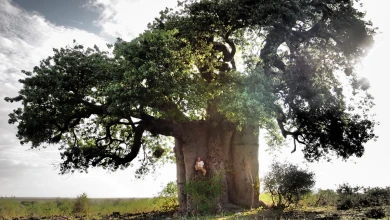
Francisco López and Barbara Ellison
Thursday, 11 December - 8pm
The third session in the series brings together two international reference points in sound art in one evening — two independent performances which converse through their proximity here. Barbara Ellison opens proceedings with a piece centred on the perceptively ambiguous and the ghostly, where voices, sounds and materials become spectral manifestations.
This is followed by Francisco López, an internationally renowned Spanish sound artist, who presents one of his radical immersions in deep listening, with his work an invitation to submerge oneself in sound matter as a transformative experience.
This double session sets forth an encounter between two artists who, from different perspectives, share the same search: to open ears to territories where sound becomes a poetic force and space of resistance.
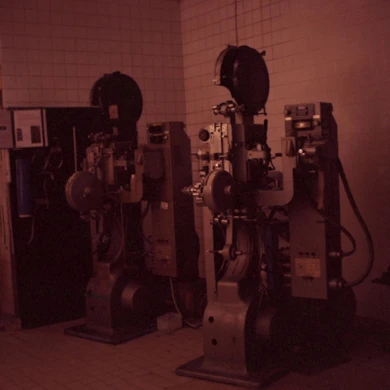
Long Live L’Abo! Celluloid and Activism
4, 5, 6 DIC 2025
L’Abominable is a collective film laboratory founded in La Courneuve (Paris, France) in 1996. It came into being in response to the disappearing infrastructures in artisan film-making and to provide artists and film-makers with a self-managed space from which to produce, develop and screen films in analogue formats such as Super 8, 16mm and 35mm. Anchored in this premise, the community promotes aesthetic and political experimentation in analogue film opposite digital hegemony. Over the years, L’Abominable, better known as L’Abo, has accompanied different generations of film-makers, upholding an international movement of independent film practices.
This third segment is structured in three sessions: a lecture on L’Abo given by Pilar Monsell and Camilo Restrepo; a session of short films in 16mm produced in L’Abo; and the feature-length film Une isle, une nuit, made by the Les Pirates des Lentillères collective.
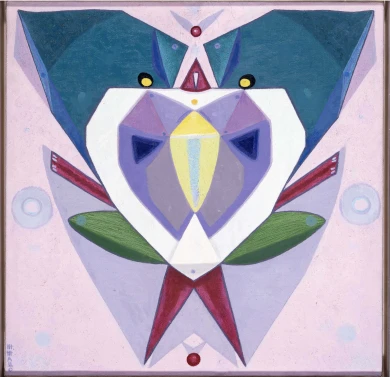
Estrella de Diego Lecture. Holding Your Brain While You Sleep
Wednesday, 3 December 2025 – 7pm
Framed inside the Museo Reina Sofía’s retrospective exhibition devoted to Maruja Mallo, this lecture delivered by Estrella de Diego draws attention to the impact of the artist’s return to Spain after her three-decade exile in Latin America.
Committed to values of progress and renewal in the Second Republic, Mallo was forced into exile to Argentina with the outbreak of the Civil War and would not go back to Spain to settle definitively until 1965 — a return that was, ultimately, a second exile.
Mallo saw out her prolific artistic trajectory with two impactful series: Moradores del vacío (Dwellers of the Void, 1968–1980) and Viajeros del éter (Ether Travelers, 1982), entering her most esoteric period in which she drew inspiration from her “levitational experiences” of crossing the Andes and sailing the Pacific. Her travels, both real and imaginary, became encounters with superhuman dimensions.
In parallel, her public persona gained traction as she became a popular figure and a key representative of the Generation of ‘27 — the other members of which also started returning to Spain.
This lecture is part of the Art and Exile series, which seeks to explore in greater depth one of the defining aspects of Maruja Mallo’s life and work: her experience of exile. An experience which for Mallo was twofold: the time she spent in the Americas and her complex return to Spain.
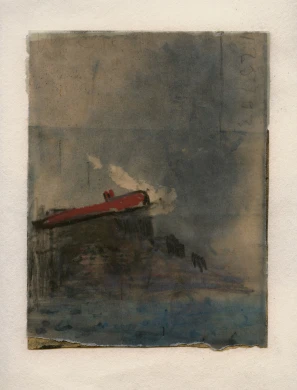
Juan Uslé. That Ship on the Mountain
Tuesday, 25 November 2025 – 7pm
Ángel Calvo Ulloa, curator of the exhibition Juan Uslé. That Ship on the Mountain, engages in conversation with artist Juan Uslé (Santander, 1954) in the Museo’s Auditorium 400 to explore in greater depth the exhibition discourse of this anthological show spanning four decades of Uslé’s artistic career.
The show casts light on the close relationship Uslé’s work bears to his life experiences, establishing connections between different stages and series which could ostensibly seem distant. Framed in this context, the conversation looks to explore the artist’s personal and professional journey: his memories, experiences of New York, his creative process, conception of painting, and ties with photography and film, and the cohesiveness and versatility that characterise his art. Key aspects for a more in-depth understanding of his artistic sphere.
The conversation, moreover, spotlights the preparatory research process that has given rise to this exhibition to grant a better understanding of the curatorial criteria and decisions that have guided its development.
These inaugural conversations, part of the main working strands of the Museo’s Public Programmes Area, aim to explore in greater depth the exhibition narratives of the shows organised by the Museo from the perspective of artists, curators and specialists.
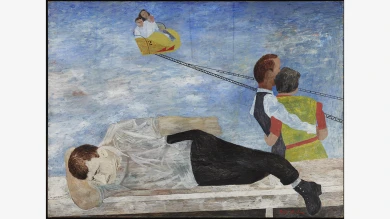



![Miguel Brieva, ilustración de la novela infantil Manuela y los Cakirukos (Reservoir Books, 2022) [izquierda] y Cibeles no conduzcas, 2023 [derecha]. Cortesía del artista](https://recursos.museoreinasofia.es/styles/small_landscape/public/Actividades/ecologias_del_deseo_utopico.jpg.webp)
![Ángel Alonso, Charbon [Carbón], 1964. Museo Reina Sofía](https://recursos.museoreinasofia.es/styles/small_landscape/public/Actividades/perspectivas_ecoambientales.jpg.webp)